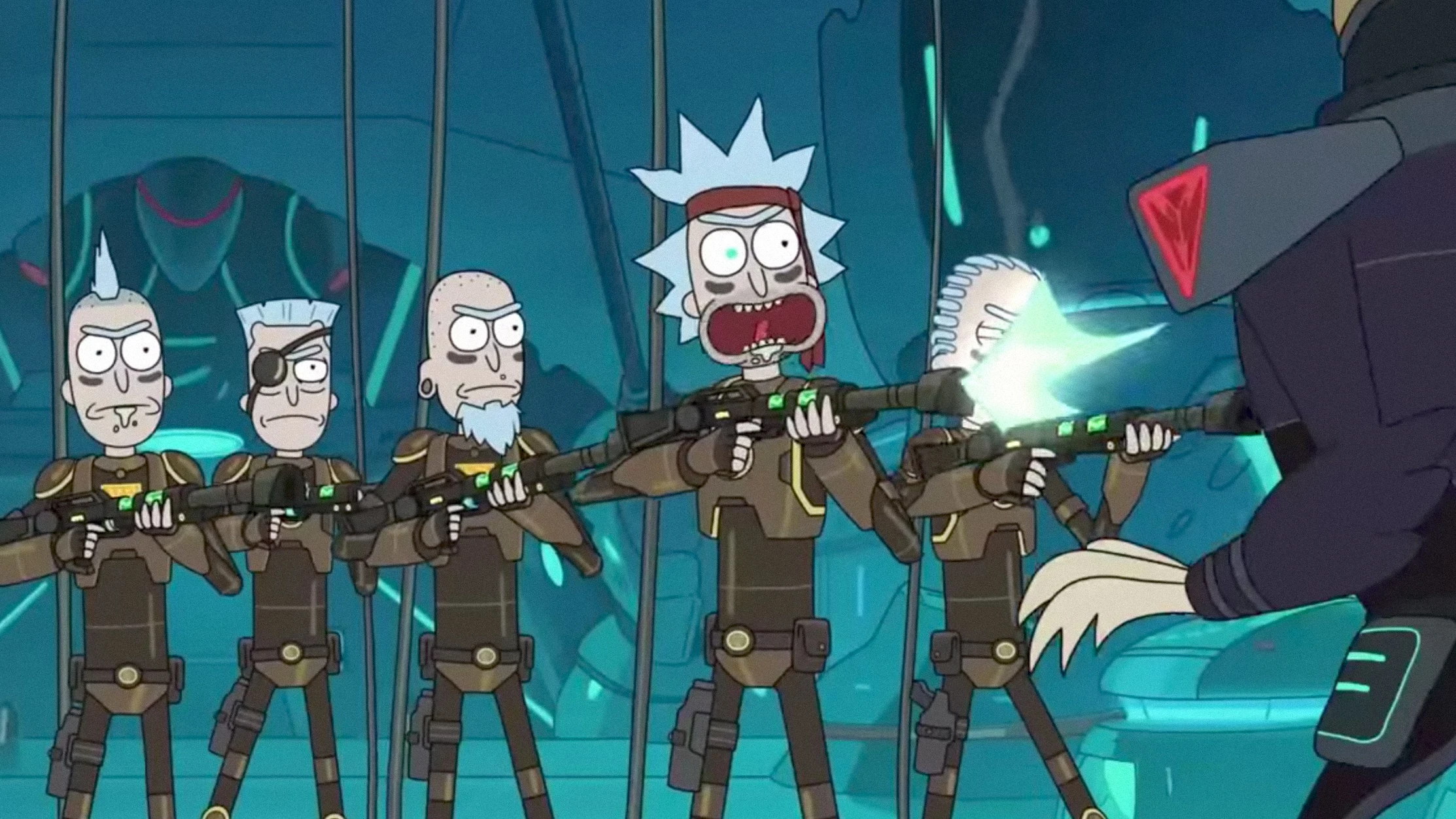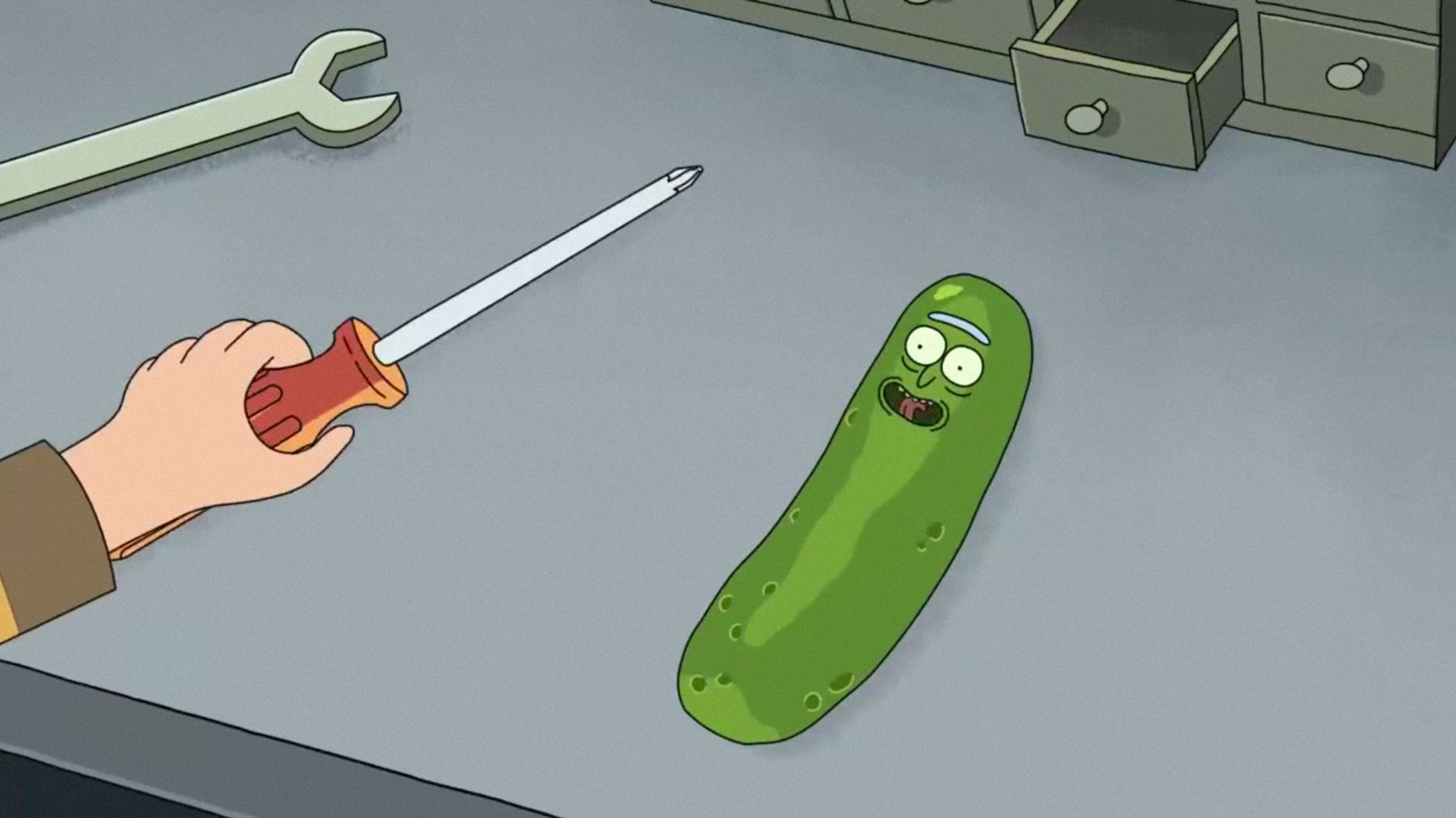One major difference between George R.R. Martin’s fans and Dan Harmon’s is the way those fans process impatience.
Last year, Martin humbly thanked the sprawling legion of Game of Thrones diehards for being nice about the interminable wait for the fifth book in his series. Harmon, in contrast, had been pelted with daily interrogations about the time line for season three of his cult hit, Rick and Morty, starting roughly the day after the season two finale.
Demand may be rabid, but he takes it in stride.
“Even if they were rude about it sometimes, I just figured that meant they loved the show,” says Harmon, who co-created the mind-bending cartoon with Justin Roiland. “It’s better for someone to want your show so badly that they’re insulting you, than if they didn’t give a crap what you made.”

As of July 30, those fans’ breathless wait was over. (Adult Swim surprise-dropped the first episode on April 1, but the third season didn’t begin until months later.) Now, seven episodes in, the consensus seems to be that the wait was worth it. Perhaps even had the wait been closer to the seven years and counting since George R.R. Martin’s last opus, rather than the less than two years since Rick and Morty season two, it would still be worth it. The new episodes have been pristine models of quality control and consistency. They’re overflowing with big ideas, complex jokes, goofy science, and evolving characters–or at least enough so to keep fans rewatching while they await the practically inevitable Rick and Morty season four.
As we hurtle closer toward the bittersweet reality of this season ending, Fast Company spoke with Dan Harmon about whether Rick is a superhero, how to animate a rat battle, and the unlikely inspiration for Pickle Rick.
Other Ways Considered For Getting Rick Out Of Space Prison
“I think we spent some time toying with the notion of a big, physical prison break, with him dwelling among the prison culture and getting rescued by maybe a bunch of characters that we’ve met in previous episodes,” Harmon says. “I think it was Justin who finally said, ‘What if we just begin the episode with him already out of prison in someplace like Shoney’s, saying how crazy it was that he broke out of prison?’ I remember us responding, ‘Yeah, it would be funny but it would probably piss off the fans,’ because I imagined they’d feel owed something. And that got us starting to think, well, if we did begin the episode that way, what would justify beginning it that way that wouldn’t piss off the fans.”
https://youtu.be/uyHp4FdPBT4
The Inspiration For What Actually Ended Up Happening
“We decided we wanted more of a psychological experience that was happening, so we started taking about things like The Cell and Silence of the Lambs,” Harmon says. “There was also a movie called 36 Hours with James Garner where he’s an American soldier that’s being held by the German army and it’s because they know that he knows the plans for D-Day, and they know that D-Day is coming, and they know he has the plans for it so they’re trying to convince him that the war is over and that he’s at an American VA hospital, and it’s this big elaborate ruse. Movies like that, with more of a psychological thriller got us interested. Also, we were interested in feeding Rick’s supposed origin story, only to reveal that the inner workings of Rick’s mind are more elaborate than the enemy could anticipate.”
How Pickle Rick Was Partly Influenced By Breaking Bad
“I think it was a case of somebody just saying, ‘What if we started the episode this way, with him turning himself into a pickle?'” Harmon says. Then the question became, ‘If we say yes to that, why would he have turned himself into a pickle?’ And the first answer was, ‘Well, because he could and Rick is his own worst enemy and he’d want to prove himself.’ Then the family therapy concept came in there because we started asking ourselves how could we keep addressing the divorce story of the season. A big inspiration for the Pickle Rick story, though, was the Breaking Bad episode where the Winnebago breaks down in the desert.
“It’s more than a bottle episode, it’s specifically a bottle episode of Breaking Bad where we get to see Walter White up against primal forces instead of watching him negotiate and bluff with street dealers and kingpins and using his access to cool chemicals and any equipment he wants to make any bombs and crystal meth and stuff. It was interesting to watch him trapped in a hot van, about to die, and having to fall back on his basic science knowledge to keep them alive, while also seeing what he was like under extreme stress in the hot desert heat. That was a big inspiration. I thought it was cool, the idea that Rick has all these gadgets all the time, he has these guns and vehicles and robots. He can make anything with his human hands that he wants because he’s always near a big toolbox. How smart is Rick, though? Is he so smart that with his mouth alone he could gain an advantage over biological killing machines in an environment that wasn’t built to sustain him?”
How The Writers And Animators Worked Together To Create The Stunning Rat Battle Sequence
“The amount we leave in the animators’ hands is decided on a case-by-case basis, but with that episode we got very detailed about the process of hacking the cockroach to give Rick mobility,” says Harmon. “We also got pretty specific about the mechanisms he used to assemble the rat power armor and decapitate the initial rat whose brain was the final piece of the puzzle. But it’s almost like a ramp from the cockroach brain, where the writers are fully in charge, up to the point where he emerges from the power armor thing. The writers slowly release our grip from the steering wheel and let the artist take over.”

“We’ll start using phrases like, for instance, ‘mechanisms made out of sewer garbage like bottle caps, push pins’–we’ll give examples in the plural, but the indication to the animators is that it’s okay for you to get inventive here. Then all the way up to when he actually emerges from the platform and he’s wearing the full rat suit and he’s ready for combat, I think it literally says in the script ‘Rick uses Pickle Rick technology to violently destroy hundreds and hundreds of rats in a fight scene that feels too long and then feels even longer and just when you think it feels too long, it’s even longer than that so it starts to feel like a mistake, the television is broken.’ We make references to things like the battle scene in Oldboy and that’s it. You let the artists have fun, and hopefully that’s their reward for some of the abuse we put them through.”

“Vindicators” Was Made So Rick Could Interact With Superheroes
“We liked the idea of constantly generating new characters in an expanded universe–building the world outward in season three whereas we felt we might have built it a little inward in season two,” Harmon says. “But [the Vindicators episode] was just something we thought would be cool, not so much that we wanted to take the pee out of superhero mythology. God knows we’ve been doing that for 40 years, the ironic superhero thing. This was more about now that superhero mythology is in fact in the mainstream, wondering how Rick would fit among them. Would they view him as a Lex Luthor? Would they view him as a Bruce Wayne? Would he be a good guy or a bad guy? What would Rick be in a universe where superheroes existed? We were kind of eager to map him in that milieu.”
Recognize your brand’s excellence by applying to this year’s Brands That Matter Awards before the early-rate deadline, May 3.
